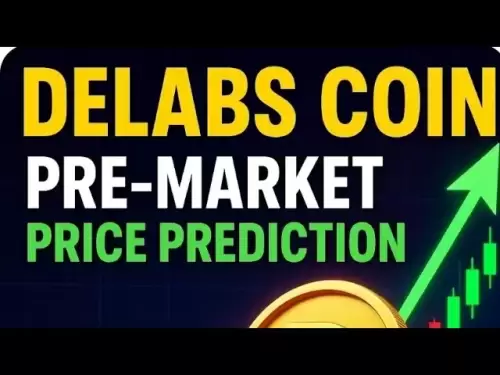-
 Bitcoin
Bitcoin $118600
0.36% -
 Ethereum
Ethereum $3855
1.06% -
 XRP
XRP $3.195
-0.09% -
 Tether USDt
Tether USDt $1.000
-0.04% -
 BNB
BNB $844.5
6.23% -
 Solana
Solana $191.3
2.83% -
 USDC
USDC $0.9997
-0.01% -
 Dogecoin
Dogecoin $0.2376
0.10% -
 TRON
TRON $0.3242
0.83% -
 Cardano
Cardano $0.8222
0.13% -
 Hyperliquid
Hyperliquid $45.26
6.53% -
 Sui
Sui $4.200
-2.56% -
 Stellar
Stellar $0.4336
-1.24% -
 Chainlink
Chainlink $18.86
0.28% -
 Hedera
Hedera $0.2796
-1.75% -
 Bitcoin Cash
Bitcoin Cash $583.3
-1.84% -
 Avalanche
Avalanche $27.06
8.09% -
 Litecoin
Litecoin $112.3
-1.16% -
 Toncoin
Toncoin $3.353
0.58% -
 UNUS SED LEO
UNUS SED LEO $8.968
-0.11% -
 Shiba Inu
Shiba Inu $0.00001395
-0.54% -
 Ethena USDe
Ethena USDe $1.001
-0.03% -
 Uniswap
Uniswap $10.76
0.69% -
 Polkadot
Polkadot $4.175
0.26% -
 Monero
Monero $326.7
1.07% -
 Bitget Token
Bitget Token $4.665
1.61% -
 Dai
Dai $0.9998
-0.02% -
 Pepe
Pepe $0.00001271
0.32% -
 Cronos
Cronos $0.1416
2.01% -
 Aave
Aave $299.3
1.15%
Bitcoin Quantitative Trading Guide: From Theory to Practice
Bitcoin quantitative trading uses math models and algorithms to make informed trading decisions, aiming to increase efficiency and profitability by removing human emotion.
May 28, 2025 at 09:07 pm

Bitcoin quantitative trading is a sophisticated approach to cryptocurrency trading that leverages mathematical models and algorithms to make trading decisions. This guide will take you from the theoretical underpinnings of quantitative trading to practical implementation, helping you understand and apply these strategies to Bitcoin trading.
Understanding Quantitative Trading
Quantitative trading involves using mathematical models and algorithms to identify trading opportunities. In the context of Bitcoin, this means analyzing market data, historical prices, and various other indicators to make informed trading decisions. The goal is to remove human emotion from the trading process, thereby potentially increasing efficiency and profitability.
Quantitative trading strategies can range from simple moving average crossovers to complex machine learning models. The key is to develop a strategy that can be backtested and optimized using historical data. This allows traders to assess the potential effectiveness of their strategy before risking real capital.
Key Components of Quantitative Trading
To successfully engage in quantitative trading, you need to understand several key components. These include data collection, model development, backtesting, and execution.
Data Collection: Accurate and comprehensive data is the foundation of any quantitative trading strategy. For Bitcoin, this includes price data, trading volume, and other market indicators. Reliable data sources are essential to ensure the integrity of your models.
Model Development: This involves creating mathematical models that can predict future price movements based on historical data. Common models include regression analysis, time series analysis, and machine learning algorithms.
Backtesting: Before deploying a strategy in the live market, it must be backtested using historical data. This process helps you evaluate the strategy's performance and make necessary adjustments.
Execution: Once a strategy has been developed and backtested, it needs to be executed in the market. This can be done manually or through automated trading systems.
Developing a Bitcoin Quantitative Trading Strategy
Developing a Bitcoin quantitative trading strategy involves several steps, each of which is crucial to the overall success of the strategy.
Define Your Objective: Start by defining what you want to achieve with your trading strategy. Are you looking for short-term gains or long-term investment? Your objective will guide the development of your model.
Select Relevant Data: Choose the data that will be most relevant to your strategy. For Bitcoin, this could include price data, trading volume, and market sentiment indicators.
Choose a Model: Select a mathematical model that aligns with your objective and data. Simple models like moving averages can be effective for beginners, while more advanced traders might opt for machine learning algorithms.
Develop and Test the Model: Use historical data to develop and test your model. This involves training the model on a portion of the data and then testing it on another portion to see how well it performs.
Optimize the Model: Based on the results of your testing, make adjustments to your model to improve its performance. This might involve tweaking parameters or selecting different variables.
Backtest the Strategy: Once you have a model that you are satisfied with, backtest it using a larger dataset to ensure its robustness. This step is crucial for validating your strategy.
Implement the Strategy: Finally, implement your strategy in the live market. This can be done manually or through automated trading systems.
Tools and Platforms for Bitcoin Quantitative Trading
Several tools and platforms are available to help you with Bitcoin quantitative trading. These include:
TradingView: A popular platform for charting and analyzing market data. It also offers a scripting language called Pine Script, which can be used to develop and backtest trading strategies.
MetaTrader 4 (MT4): While traditionally used for forex trading, MT4 can be adapted for Bitcoin trading. It offers a robust environment for developing and testing trading strategies.
QuantConnect: A platform specifically designed for quantitative trading. It offers a wide range of data sources and tools for developing and backtesting strategies.
Python: A versatile programming language that is widely used in quantitative trading. Libraries like Pandas, NumPy, and scikit-learn can be used to develop and test trading strategies.
Practical Example: Moving Average Crossover Strategy
To illustrate how a quantitative trading strategy can be implemented, let's walk through a simple moving average crossover strategy for Bitcoin.
Data Collection: Start by collecting historical price data for Bitcoin. This can be done using APIs from exchanges like Binance or Coinbase.
Model Development: The moving average crossover strategy involves calculating two moving averages: a short-term moving average and a long-term moving average. When the short-term moving average crosses above the long-term moving average, it signals a buy opportunity. Conversely, when the short-term moving average crosses below the long-term moving average, it signals a sell opportunity.
Backtesting: Use historical data to backtest the strategy. Calculate the moving averages and simulate trades based on the crossover signals. Track the performance of the strategy over time to see how well it performs.
Execution: Once the strategy has been backtested and optimized, implement it in the live market. This can be done manually by monitoring the moving averages and executing trades based on the signals, or it can be automated using a trading platform like TradingView or MetaTrader 4.
Risk Management in Bitcoin Quantitative Trading
Risk management is a critical aspect of any trading strategy, and this is especially true for Bitcoin quantitative trading. Given the volatile nature of cryptocurrency markets, it's important to have a robust risk management plan in place.
Position Sizing: Determine how much capital to allocate to each trade. A common approach is to risk a small percentage of your total capital on each trade, typically between 1% and 2%.
Stop-Loss Orders: Use stop-loss orders to limit potential losses. Set a stop-loss level that aligns with your risk tolerance and trading strategy.
Diversification: Consider diversifying your trading strategies and assets to spread risk. While focusing on Bitcoin, you might also explore other cryptocurrencies or even traditional financial markets.
Monitoring and Adjusting: Continuously monitor the performance of your trading strategy and be prepared to make adjustments as needed. This might involve tweaking model parameters or even abandoning a strategy that is no longer performing well.
FAQs
Q1: What are the advantages of using quantitative trading for Bitcoin?
A1: Quantitative trading offers several advantages for Bitcoin trading. It removes human emotion from the trading process, which can lead to more disciplined and consistent trading. Additionally, quantitative strategies can be backtested and optimized using historical data, allowing traders to assess their potential effectiveness before risking real capital.
Q2: How much historical data is needed for backtesting a Bitcoin quantitative trading strategy?
A2: The amount of historical data needed for backtesting can vary depending on the complexity of your strategy and the time frame you are trading. As a general rule, it's advisable to use at least two years of historical data to ensure your strategy is robust across different market conditions.
Q3: Can quantitative trading strategies be fully automated?
A3: Yes, quantitative trading strategies can be fully automated using trading platforms and programming languages like Python. Automation allows for faster execution of trades and can help eliminate human error. However, it's important to regularly monitor and adjust automated strategies to ensure they continue to perform well.
Q4: Are there any specific regulatory considerations for Bitcoin quantitative trading?
A4: Regulatory considerations for Bitcoin quantitative trading can vary by jurisdiction. It's important to be aware of the regulations in your country regarding cryptocurrency trading and to ensure compliance. This might include reporting requirements, tax obligations, and restrictions on certain trading activities.
Disclaimer:info@kdj.com
The information provided is not trading advice. kdj.com does not assume any responsibility for any investments made based on the information provided in this article. Cryptocurrencies are highly volatile and it is highly recommended that you invest with caution after thorough research!
If you believe that the content used on this website infringes your copyright, please contact us immediately (info@kdj.com) and we will delete it promptly.
- Crypto Investments, Dogecoin Substitutes, and Wealthy Returns: Navigating the Meme Coin Mania and Beyond
- 2025-07-29 00:30:13
- Week Review: July 21 - July 27 - Crypto, AI, and Trade Deals, Oh My!
- 2025-07-29 00:30:13
- Bitcoin, Gold, and Debt Hedges: A New Yorker's Take
- 2025-07-29 00:50:12
- Bitcoin, Japan, Metaplanet: A New Era of Corporate Crypto Adoption?
- 2025-07-29 00:50:12
- Bitcoin Bonanza in Japan: Metaplanet Leads the Charge
- 2025-07-29 00:55:23
- Bitcoin, Merger, and ProCap Financial: A New Era for Crypto in Traditional Finance
- 2025-07-29 00:55:23
Related knowledge

What is the significance of the 21-week EMA in a Bitcoin bull market?
Jul 10,2025 at 06:56pm
Understanding the 21-Week EMA in Cryptocurrency AnalysisThe 21-week Exponential Moving Average (EMA) is a technical indicator widely used by traders a...

How to identify a volatility contraction pattern on Bitcoin using indicators?
Jul 07,2025 at 07:28am
What is a Volatility Contraction Pattern in Bitcoin Trading?A volatility contraction pattern refers to a phase where the price movement of an asset, s...

Do indicators work better on a logarithmic or linear scale for Bitcoin's long-term chart?
Jul 08,2025 at 01:42pm
Understanding Chart Scales in Cryptocurrency TradingIn cryptocurrency trading, particularly for analyzing Bitcoin's long-term trends, chart scales pla...

What is the Woodies CCI indicator and can it be used for Bitcoin?
Jul 04,2025 at 05:14pm
Understanding the Woodies CCI IndicatorThe Woodies CCI indicator is a variation of the traditional Commodity Channel Index (CCI), which was originally...

How to use indicators to trade the opening range breakout for Bitcoin CME futures?
Jul 05,2025 at 07:35pm
What Is the Opening Range Breakout Strategy?The opening range breakout (ORB) strategy is a popular trading technique used in both traditional markets ...

How to use the Relative Vigor Index (RVI) for Bitcoin trading?
Jul 07,2025 at 02:00pm
Understanding the Relative Vigor Index (RVI)The Relative Vigor Index (RVI) is a technical analysis tool used to assess the strength of price movements...

What is the significance of the 21-week EMA in a Bitcoin bull market?
Jul 10,2025 at 06:56pm
Understanding the 21-Week EMA in Cryptocurrency AnalysisThe 21-week Exponential Moving Average (EMA) is a technical indicator widely used by traders a...

How to identify a volatility contraction pattern on Bitcoin using indicators?
Jul 07,2025 at 07:28am
What is a Volatility Contraction Pattern in Bitcoin Trading?A volatility contraction pattern refers to a phase where the price movement of an asset, s...

Do indicators work better on a logarithmic or linear scale for Bitcoin's long-term chart?
Jul 08,2025 at 01:42pm
Understanding Chart Scales in Cryptocurrency TradingIn cryptocurrency trading, particularly for analyzing Bitcoin's long-term trends, chart scales pla...

What is the Woodies CCI indicator and can it be used for Bitcoin?
Jul 04,2025 at 05:14pm
Understanding the Woodies CCI IndicatorThe Woodies CCI indicator is a variation of the traditional Commodity Channel Index (CCI), which was originally...

How to use indicators to trade the opening range breakout for Bitcoin CME futures?
Jul 05,2025 at 07:35pm
What Is the Opening Range Breakout Strategy?The opening range breakout (ORB) strategy is a popular trading technique used in both traditional markets ...

How to use the Relative Vigor Index (RVI) for Bitcoin trading?
Jul 07,2025 at 02:00pm
Understanding the Relative Vigor Index (RVI)The Relative Vigor Index (RVI) is a technical analysis tool used to assess the strength of price movements...
See all articles

























































































